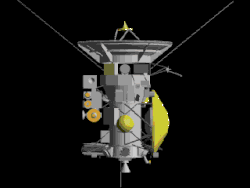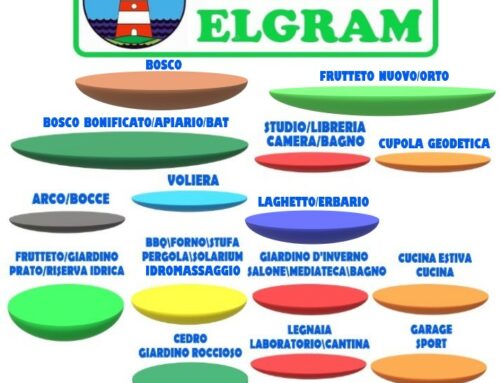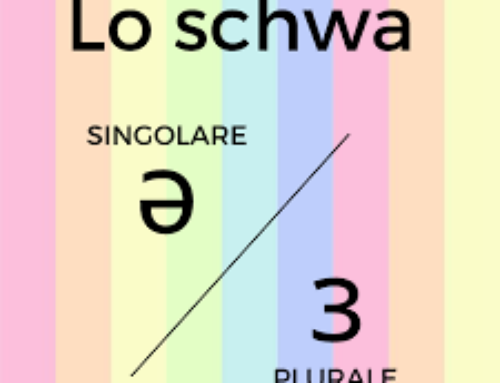E’ stato tutto di buon auspicio: la sonda ha raggiunto Saturno… e vive! Il Morghen Club è diventato J1Club e poi Gilda Esploratori Erranti… e vive! E noi2? siamo ancora qua! Eh già… 😉

La sonda Cassini compie 17 anni
Il 15 ottobre 1997 la sonda iniziava il suo viaggio attraverso il Sistema Solare. Dieci anni fa l’ingresso nell’orbita di Saturno: da allora, Cassini non smette di stupirci con foto e scoperte. Cronistoria di una missione di successo.
< 1/47 > 15 ottobre 1997. Un potente razzo Titan IV/B Centaur si alza da Cape Canaveral (Florida). Nella sua pancia trasporta uno dei più pesanti e grandi satelliti mai spediti nello spazio. Si tratta della nave spaziale Cassini diretta verso Saturno e della sonda Huygens che ha “chiesto un passaggio” fino a Titano, la luna più grande e interessante del pianeta.
Per raggiungere la loro meta percorreranno in sette anni 3,4 miliardi di km.
< 2/47 > Cassini, dopo le sonde sovietiche Phobos 1 e 2, è il più grande satellite per esplorazioni planetarie mai costruito: alto 6,7 metri, ha un diametro di circa 4 metri. Ha dunque le dimensioni di un pullman da 30 posti. Ma a bordo niente passeggeri: soltanto 12 strumenti supertecnologici (un record anche questo) per misurare campo magnetico, atmosfera, anelli e satelliti di Saturno.(Guarda il multimedia per scoprirne tutti i segreti)
Cassini e Huygens sono nate dalla collaborazione tra la Nasa, l’agenzia spaziale europea e quella italiana.
< 3/47 > Ecco una limpida immagine di Saturno, la prima arrivata dalla sonda Cassini (dal nome dell’astronomo italiano Gian Domenico Cassini, che nel 1675 studiò Saturno e ne rivelò quattro satelliti), quando si trovava ancora a ben 285 milioni di chilometri (due volte la distanza che esiste tra il Sole e la Terra) dalla sua destinazione.
Gas e anelli. Saturno, il secondo pianeta del sistema solare e quello con la densità più bassa, inferiore a quella dell’acqua, è composto principalmente da un’atmosfera di idrogeno (94%) ed elio (6%) più un cocktail di tracce di ammoniaca e metano. Sotto l’atmosfera si trova uno strato di idrogeno ad altissima pressione che circonda il cuore del pianeta, composto da materiale liquido e roccioso della stesse dimensioni della Terra.
Sebbene anche Giove, Urano e Nettuno ne siano dotati, Saturno deve la sua fama agli anelli che lo circondano. Non è la prima volta che una missione spaziale allunga i suoi occhi sul pianeta: Pioneer 11 nel 1979 e Voyager 1 [Guarda la gallery sui 35 anni della sonda] e 2, nel ’80 e ’81 gli sono passati accanto.
< 4/47 > In questa foto alla luce visibile è possibile scorgere con chiarezza le differenze tra le fasce degli anelli (vedi foto seguenti) e alcuni fenomeni atmosferici. Sono proprio questi due dei principali campi di indagine della sonda. Lo spicchio di luce azzurra che si nota nell’emisfero nord è la luce del Sole riflessa dall’atmosfera. In quello meridionale si scorgono due deboli punti neri. Si tratta di tempeste.
FONTE E ALTRE IMMAGINI
I segreti di Cassini
Dopo sette anni di viaggio e oltre tre miliardi di chilometri percorsi, la sonda Cassini è giunta alla meta: il sistema di Saturno, con i suoi anelli e le sue lune.
FONTE
Il 19 luglio 2013 la sonda spaziale Cassini della NASA è entrata nell’ombra di Saturno trasmettendo le immagini del pianeta, dei suoi anelli interni e di sette delle sue lune.
Descrizione
English: On July 19, 2013, in an event celebrated the world over, NASA’s Cassini spacecraft slipped into Saturn’s shadow and turned to image the planet, seven of its moons, its inner rings — and, in the background, our home planet, Earth.
With the sun’s powerful and potentially damaging rays eclipsed by Saturn itself, Cassini’s onboard cameras were able to take advantage of this unique viewing geometry. They acquired a panoramic mosaic of the Saturn system that allows scientists to see details in the rings and throughout the system as they are backlit by the sun. This mosaic is special as it marks the third time our home planet was imaged from the outer solar system; the second time it was imaged by Cassini from Saturn’s orbit; and the first time ever that inhabitants of Earth were made aware in advance that their photo would be taken from such a great distance.
With both Cassini’s wide-angle and narrow-angle cameras aimed at Saturn, Cassini was able to capture 323 images in just over four hours. This final mosaic uses 141 of those wide-angle images. Images taken using the red, green and blue spectral filters of the wide-angle camera were combined and mosaicked together to create this natural-color view. A brightened version with contrast and color enhanced (Figure 1), a version with just the planets annotated (Figure 2), and an annotated version (Figure 3) are shown above.
This image spans about 404,880 miles (651,591 kilometers) across.
The outermost ring shown here is Saturn’s E ring, the core of which is situated about 149,000 miles (240,000 kilometers) from Saturn. The geysers erupting from the south polar terrain of the moon Enceladus supply the fine icy particles that comprise the E ring; diffraction by sunlight gives the ring its blue color. Enceladus (313 miles, or 504 kilometers, across) and the extended plume formed by its jets are visible, embedded in the E ring on the left side of the mosaic.
At the 12 o’clock position and a bit inward from the E ring lies the barely discernible ring created by the tiny, Cassini-discovered moon, Pallene (3 miles, or 4 kilometers, across). (For more on structures like Pallene’s ring, see PIA08328). The next narrow and easily seen ring inward is the G ring. Interior to the G ring, near the 11 o’clock position, one can barely see the more diffuse ring created by the co-orbital moons, Janus (111 miles, or 179 kilometers, across) and Epimetheus (70 miles, or 113 kilometers, across). Farther inward, we see the very bright F ring closely encircling the main rings of Saturn.
Following the outermost E ring counter-clockwise from Enceladus, the moon Tethys (662 miles, or 1,066 kilometers, across) appears as a large yellow orb just outside of the E ring. Tethys is positioned on the illuminated side of Saturn; its icy surface is shining brightly from yellow sunlight reflected by Saturn. Continuing to about the 2 o’clock position is a dark pixel just outside of the G ring; this dark pixel is Saturn’s Death Star moon, Mimas (246 miles, or 396 kilometers, across). Mimas appears, upon close inspection, as a very thin crescent because Cassini is looking mostly at its non-illuminated face.
The moons Prometheus, Pandora, Janus and Epimetheus are also visible in the mosaic near Saturn’s bright narrow F ring. Prometheus (53 miles, or 86 kilometers, across) is visible as a faint black dot just inside the F ring and at the 9 o’clock position. On the opposite side of the rings, just outside the F ring, Pandora (50 miles, or 81 kilometers, across) can be seen as a bright white dot. Pandora and Prometheus are shepherd moons and gravitational interactions between the ring and the moons keep the F ring narrowly confined. At the 11 o’clock position in between the F ring and the G ring, Janus (111 miles, or 179 kilometers, across) appears as a faint black dot. Janus and Prometheus are dark for the same reason Mimas is mostly dark: we are looking at their non-illuminated sides in this mosaic. Midway between the F ring and the G ring, at about the 8 o’clock position, is a single bright pixel, Epimetheus. Looking more closely at Enceladus, Mimas and Tethys, especially in the brightened version of the mosaic, one can see these moons casting shadows through the E ring like a telephone pole might cast a shadow through a fog.
In the non-brightened version of the mosaic, one can see bright clumps of ring material orbiting within the Encke gap near the outer edge of the main rings and immediately to the lower left of the globe of Saturn. Also, in the dark B ring within the main rings, at the 9 o’clock position, one can see the faint outlines of two spoke features, first sighted by NASA’s Voyager spacecraft in the early 1980s and extensively studied by Cassini.
Finally, in the lower right of the mosaic, in between the bright blue E ring and the faint but defined G ring, is the pale blue dot of our planet, Earth. Look closely and you can see the moon protruding from the Earth’s lower right. (For a higher resolution view of the Earth and moon taken during this campaign, see PIA14949.) Earth’s twin, Venus, appears as a bright white dot in the upper left quadrant of the mosaic, also between the G and E rings. Mars also appears as a faint red dot embedded in the outer edge of the E ring, above and to the left of Venus.
For ease of visibility, Earth, Venus, Mars, Enceladus, Epimetheus and Pandora were all brightened by a factor of eight and a half relative to Saturn. Tethys was brightened by a factor of four. In total, 809 background stars are visible and were brightened by a factor ranging from six, for the brightest stars, to 16, for the faintest. The faint outer rings (from the G ring to the E ring) were also brightened relative to the already bright main rings by factors ranging from two to eight, with the lower-phase-angle (and therefore fainter) regions of these rings brightened the most. The brightened version of the mosaic was further brightened and contrast-enhanced all over to accommodate print applications and a wide range of computer-screen viewing conditions.
Some ring features — such as full rings traced out by tiny moons — do not appear in this version of the mosaic because they require extreme computer enhancement, which would adversely affect the rest of the mosaic. This version was processed for balance and beauty.
This view looks toward the unlit side of the rings from about 17 degrees below the ring plane. Cassini was approximately 746,000 miles (1.2 million kilometers) from Saturn when the images in this mosaic were taken. Image scale on Saturn is about 45 miles (72 kilometers) per pixel.
This mosaic was made from pictures taken over a span of more than four hours while the planets, moons and stars were all moving relative to Cassini. Thus, due to spacecraft motion, these objects in the locations shown here were not in these specific places over the entire duration of the imaging campaign. Note also that Venus appears far from Earth, as does Mars, because they were on the opposite side of the sun from Earth.
The Cassini-Huygens mission is a cooperative project of NASA, the European Space Agency and the Italian Space Agency. NASA’s Jet Propulsion Laboratory, a division of the California Institute of Technology in Pasadena, manages the mission for NASA’s Science Mission Directorate, Washington, D.C. The Cassini orbiter and its two onboard cameras were designed, developed and assembled at JPL. The imaging operations center is based at the Space Science Institute in Boulder, Colo.
Français: Photomontage intitulée « Le Jour où la Terre a souri ». La sonde Cassini-Huygens a profité d’une position favorable pour photographier une « éclipse solaire » de la planète Saturne le 19 juillet 2013. Ce photomontage de 141 photos retouchées, publié le 12 novembre 2013, montre tous les anneaux de Saturne.
Data 12 novembre 2013, 21:56:07
FONTE
Autore NASA/JPL-Caltech/SSI




